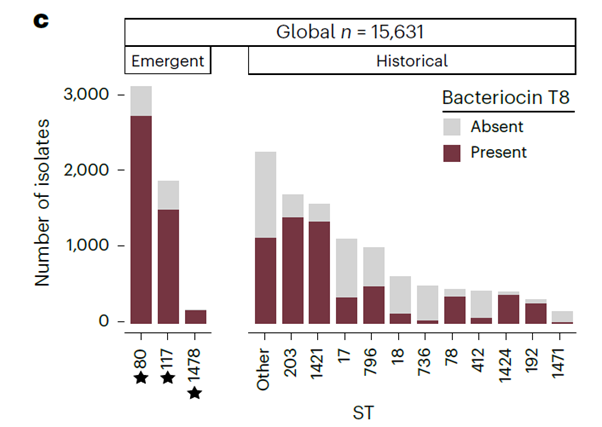
When Vancomycin Fails: VREfm Takes Hold in Hospitals
Vancomycin is often regarded as the last-resort antibiotic for treating severe Gram-positive infections, including those caused by methicillin-resistant Staphylococcus aureus (MRSA) and Enterococcus faecium. When this critical drug no longer works, we lose one of our most powerful tools in modern medicine.
But the alarm is already ringing.
Enter vancomycin-resistant Enterococcus faecium (VREfm); a rising antimicrobial-resistant (AMR) threat in healthcare. VREfm is increasingly responsible for healthcare-associated infections (HAIs) such as bloodstream infections, urinary tract infections, and surgical site infections, particularly among vulnerable patients in intensive care units or with long hospital stays.
Why it matters:
As hospitals are forced to rely on drugs like linezolid and daptomycin, the growing adaptability of VREfm is pushing us closer to a post-antibiotic reality.
Current Gaps in Hospital Cleaning Protocols
Despite routine hygiene measures like regular disinfection, a recent study in Dutch healthcare found that 93.4% of hospitals conduct additional room cleaning and disinfection after the discharge of a confirmed VREfm carrier. However, the cleaning methods used vary significantly, with no standardized protocol across institutions.
Although extra measures are often taken during outbreaks, some hospitals do not implement additional cleaning, even in such cases. This highlights inconsistencies in VREfm management practices, reflecting ongoing challenges in detecting its prevalence and containing its spread within healthcare settings.
Increasing VRE Prevalence in Malaysian Hospitals
A 2021 study in Malaysia reported a higher prevalence of vancomycin-resistant enterococci (VRE) compared to earlier regional studies. Six VRE strains were identified, including Enterococcus faecium, signaling a notable presence of these resistant pathogens in the sampled population. These findings underscore the urgent need for strengthened surveillance and robust infection control measures to curb the spread of VRE in Malaysian healthcare settings.
Genomic Surveillance Uncovers Bacteriocin-Producing VREfm Lineages
Whole-genome sequencing (WGS) is a powerful tool for tracking the population structure and transmission of Enterococcus faecium (VREfm) in healthcare settings. Through the Enhanced Detection System for Healthcare-Associated Transmission (EDS-HAT) at the University of Pittsburgh Medical Center (UPMC), researchers identified a lineage shift in VREfm strains toward those encoding bacteriocin T8; a protein that induces bacterial cell death.
The figure below illustrates the abundance of bacteriocin T8 across major global sequence types (STs) of the VREfm lineage. Bacteriocin T8 is predominantly found in VREfm lineages with high overall prevalence.

Source: Mills, E. G et al., (2025)
This shift, particularly in lineages ST80 and ST117, suggests these strains have a competitive advantage over others. Encouragingly, this discovery may open new avenues for targeted antimicrobial strategies, using bacteriocin-producing strains as a potential therapeutic tool.
Key Takeaways: Biorism addresses VREfm’s threat to healthcare hygiene
The rise VREfm marks a troubling shift in the fight against healthcare-associated infections. As one of the last lines of defense, vancomycin’s diminishing efficacy leaves clinicians with limited treatment options and patients at increased risk of severe outcomes.
The growing prevalence of VREfm, both globally and in Malaysia, highlights critical gaps in hospital cleaning protocols and infection control practices.
Biorism’s Sil2U technology enables antimicrobial fabrics and surfaces capable of eliminating >99.9999% of drug-resistant bacteria, including hospital-associated pathogens like VREfm. This high-level efficacy reinforces frontline defense when antibiotic options are limited.
Biorism is also exploring advances in genomic surveillance, such as the discovery of bacteriocin-producing VREfm lineages, offer promising leads for future therapeutic strategies.
Moving forward, Biorism aims to support a unified response that combines standardized hospital hygiene, enhanced surveillance, and innovative treatment strategies to help contain the threat of resistant infections and protect the effectiveness of our remaining antibiotics.
References:
The article is prepared by Biorism Scientist, Dr. Maisarah (PhD, Molecular & Cellular Biology).